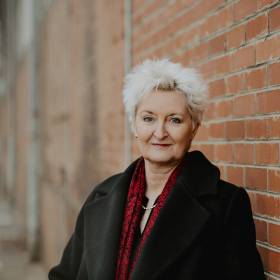
Editorial

More than 30 years after it was founded in 1991, the Lyon Biennale has made its mark as one of the five most important biennials worldwide and France’s foremost event in the field of contemporary art.
An early embracer of strong local roots, the Biennale has since its inception operated a novel territorial model based on dialogue and interaction with communities. Through the involvement of its entire regional ecosystem, it helps to showcase the region’s strengths — be they geographical, historical, socio-economic or, of course, cultural. It encourages the use of the region’s advanced know-how and skills to produce the original works imagined by the artists, whose projects — which are related to their host environment — are unique experiences.
Hotly awaited by a wide audience, and especially by the younger generations — 46% of visitors to the previous edition were under 26 —, the Biennale is exceptionally dynamic and attentive to topical subjects that meet the expectations of curious minds as well as art lovers.
After the 2022 Biennale, unanimously recognised as a success, the 17th Lyon Biennale of Contemporary Art, beginning in September 2024, wishes to reinvent itself and revamp the visiting experience. At a time when it is moving into two remarkable new venues, the Biennale will make it possible to (re)discover not only the city of Lyon and its history but more widely the metropolitan area and the region, through artistic projects that resonate with places, their stories and the people who live there.
The guest curator of the upcoming edition, Alexia Fabre, director of the Beaux-Arts de Paris school, who in her work has always focused on support for the making of contemporary art, wished the core of her programme to be the values of altruism and welcoming the other. Her project, entitled “Les voix des fleuves Crossing the water”, proposes a pathway along the river Rhône as a metaphor for all waterways, which join to form a stronger current, with the region-wide involvement of more than 15 areas in Lyon’s metropolitan area and Auvergne-Rhône-Alpes, enabling the artists to co-produce their works with volunteer participants, and thus to share these moments with the largest possible number of people.
Isabelle Bertolotti,
artistic director
Artistic project

This 17th Lyon Biennale invites artists to address, question and investigate the subject of the waxing and waning relationships of human beings with one another and with their environment. For this project, we draw on the region’s natural and human geography, and on the spirit of the Biennale’s new venues: Les Grandes Locos and the Cité Internationale de la Gastronomie. Its venues generally, among which macLYON has the longeststanding ties with the Biennale, are permeated by the question of relationships and of welcoming the other. They embody history, diversity and the invention of community practices. Their walls conjure rituals of conviviality and ways of being and making together.
The artists will cause the distinctive voices of these places — their stories and their social characteristics — to resonate. The buildings still bear the traces of those who worked and lived there, or inhabited them. These places of construction and repair, of care and hospitality, of attentiveness to others, unveil as many destinies as they do types of relationship — norm-based, programmed, imaginary, hoped-for.
The worlds of the artists, whom we wanted to offer sufficient room to stretch out, compose a score in space; a choral recital that melds their works with their relationship to places, to others, to the generations around them, to friendships that are built, to the collectives that come together to wage a common struggle or in the hope of forming lifelong relationships. All of these singular voices swell to make demands or cry injustice, but also with a more personal intent, in “conversations with friends ¹ ”, about why we keep holding on, about things that knit and unravel, and that bear a resemblance or separate.
The artists who have responded to our invitation come from multiple backgrounds, and many of them live in France. We wanted to elicit a dialogue between them at different moments of their artist’s life, giving pride of place to emerging creators, who have only recently left their art school and are reaching out to the world.
An artist’s existence is often based on others’ attention and on the role and value that society bestows on the artist. This is a conviction I share with the Biennale de Lyon, which has been highlighting the subject of the link between the creative act and the audience for many years, and is now doing so in a sphere extended to include its territory, namely the Auvergne- Rhône-Alpes region.
In human and geographical situations, and in those of diverse productions, several artists have been invited to go and engage with people and know-how, which become sources of inspiration, of experimentation and of opportunities for cocreation. In some cases, the resulting artworks will be produced in situ or in the exhibition venues, in a reciprocal two-way movement.
While otherness is sometimes a risk, we think it is a necessary risk, a chance for discovery. It is after all the spice of life. Rivers and streams convey these stories of exchanges and encounters, of rare commodities including salt, of conquests and discoveries, of dual histories where the relationship with the other can meander through twists and turns, from conflict and confrontation to convergence and confluence. We have to hope that where we end up is in a space for debate and self-invention, among other people and with other people.
Alexia Fabre, guest curator